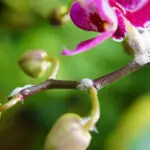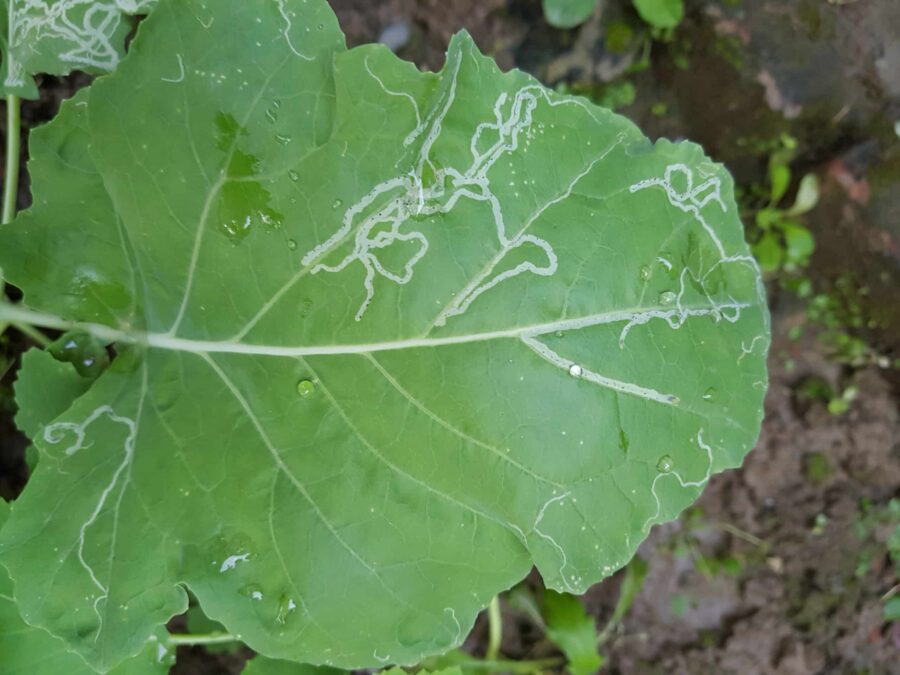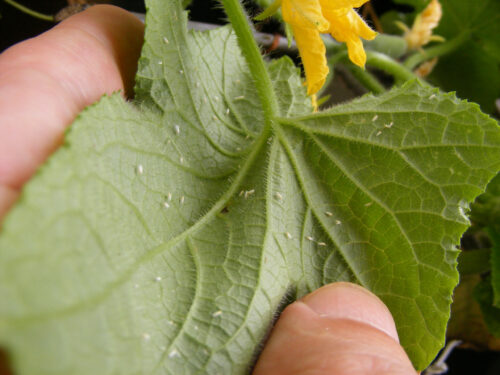What to Do About Indoor Houseplant Pests
Houseplants have really gained popularity over the last few years, and for a good reason. Studies found that indoor plants can reduce stress and improve the air quality in your home. Do you want to get in on the action, but you find that your green thumb is more of a brown one? No worries, there are an array of houseplants for all types of self-proclaimed gardeners, from the masters to the “I kill plants just by looking at them” types.
One thing’s for certain, indoor plants can be beneficial in a variety of ways, but sometimes bugs can wreak havoc on your green babies. So, we will share tips on how to get rid of houseplant bugs and prevent them from coming back!
Common Houseplant Pests
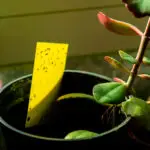
Gnats / Fruit Flies
If you’ve ever noticed annoying little bugs flying around your plants or produce, you probably know what we’re talking about. Gnats are attracted to the dampness in the potting soil. You will often find them hovering over the plants and flying up in a cloud when disturbed. Avoid overwatering to help prevent them. If the problem continues, it may be time to consider repotting.
Spider Mites

Mealybugs
These bugs have a cotton-like appearance and can most often be found where the stem meets the trunk. They quite literally suck the life out of a healthy plant. An infested plant will look dry even after watering. If you catch the bugs fast enough, you can carefully remove the affected stem. Isopropyl alcohol is also your friend! Take an alcohol-soaked cotton ball and apply it to the bug to kill them. If you have an actual pest infestation, it is best to get rid of the plant because it is extremely difficult to control them at this point.
Scale Bug
Discovering an infestation of these bugs is bad news because getting rid of them can be extremely difficult. They attach themselves to the stem and cover themselves with a hard, oval shell. Like mealybugs, scales will suck all the life out of a plant because they feed on the sap it contains. Pesticides cannot penetrate their hard shells, and your best option is scraping them off one at a time. If there is only a small number of them, you could prune the affected stems; otherwise, it may be best to get rid of the plant.
Aphids
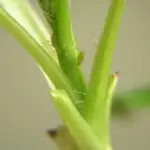
Thrips
Thrips are really tiny insects that have a width of about the size of a sewing needle. They are very difficult to see but look like small dark lines on the plant leaves. According to the Farmer’s Almanac, thrips feed by sucking up plant cells. The damage is actually caused by the virus that the bugs spread. The damage will look like streaks and small white patches on the leaves. An easy way to get rid of them is to shake the leaves to knock them off. You can also use sticky traps to catch them.
Leafminers
Leafminers are an interesting type of bug. They will leave strange, squiggly lines on the surface of the leaves. According to The Spruce, leafminers are most often found in outdoor crops but will occasionally follow plants indoors as well. They are the larvae of black flies, and their damage is mostly cosmetic. Which is great news, right!? To get rid of these pesky bugs, simply use blue sticky tape to trap the adults or remove the damaged leaves.
Whiteflies
These bugs are tiny, white flies, just as their name implies. They tend to hide underneath the leaves but watch out! They will fly out in a large dust-like cloud if disturbed. Like most of these previously mentioned houseplant pests, whiteflies feed on the plants through suction. This will lead to discoloration and distortion. The best line of defense for them is to catch them early as they reproduce quickly. Sticky traps and insecticidal soaps are effective at eliminating these nuisances.
How to Get Rid of Houseplant Bugs
Figuring out how to get rid of these pests depends on which type of bug you are dealing with. The pests and tips listed above are the usual suspects, but if you’re dealing with a particularly challenging situation, check with your county extension office or local gardening club for help. Here are a few other tips to consider:
- Inspect your plants when you buy them – The first line of defense in preventing houseplant bugs is to inspect your new plants before you ever bring them into your home. Often, there will be bugs in your new babies at the store/nursery where you purchase them. This is especially true for those that are stored outside – think the garden center of a store.
- Know how to care for each unique plant – We know that prevention is key, so it is important to understand how to care for your new plant properly. Overwatering is a common culprit for an unhealthy plant, so you must be aware of your greenery’s needs.
- Regular check-ups – Another tip is to inspect regularly. As mentioned above, catching house plant pests early is essential to thwart an infestation. Make it a habit to look for any pests as you care for your plant. It’s a good idea to look each time you water it.
- Be a clean freak! – Regularly spray and wipe the leaves with a mixture of water and dish soap to make it unattractive to bugs. Added bonus: it will also keep them looking fresh and shiny!
- Go botanical – Consider companion planting and let nature work in harmony! Keep botanical pest repellents, like a pouch of Stay Away Spiders, nearby to keep pests out. Using scents like rosemary and citronella will deter many bugs. They will not want to make a home near such strong scents.
Keep Pest Problems Under Control
There you have it! We covered the most common types of houseplant bugs. Remember that prevention is the best option to keep your plants in tip-top shape! Have you ever dealt with any of these pesky problems? Let us know in the comments! Have you found that you are dealing with similar issues in your garden? We can help you there too! Check out our blog about keeping common pests & bugs out of your garden.





